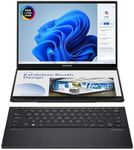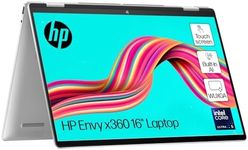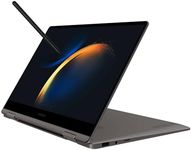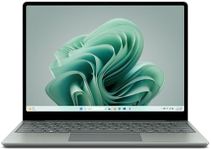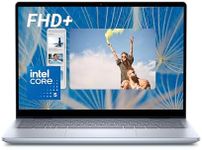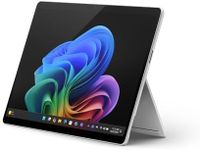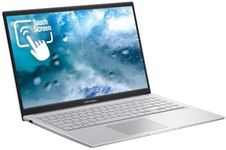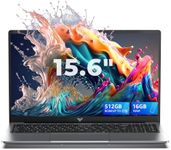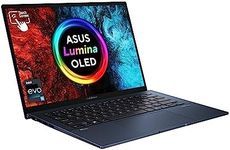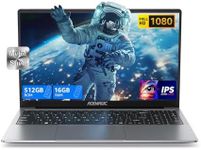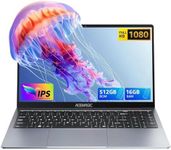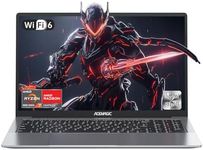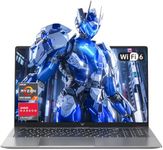Buying Guide for the Best Touchscreen Laptops
Choosing the right touchscreen laptop can significantly enhance your computing experience, whether for work, study, or entertainment. Touchscreen laptops offer the convenience of direct interaction with the screen, making tasks like drawing, note-taking, and navigation more intuitive. To find the best fit for you, consider the key specifications that will impact performance, usability, and overall satisfaction.Screen SizeScreen size is the diagonal measurement of the laptop's display, typically ranging from 11 to 17 inches. This spec is important because it affects portability and usability. Smaller screens (11-13 inches) are more portable and easier to carry around, making them ideal for frequent travelers or students. Medium screens (14-15 inches) offer a balance between portability and viewing comfort, suitable for general use. Larger screens (16-17 inches) provide a more immersive experience, perfect for gaming, multimedia, and professional work that requires detailed visuals. Choose a screen size based on your need for portability versus screen real estate.
ResolutionResolution refers to the number of pixels on the screen, impacting the clarity and detail of the display. Common resolutions include HD (1366x768), Full HD (1920x1080), and 4K (3840x2160). Higher resolutions provide sharper and more detailed images. HD is sufficient for basic tasks and web browsing, Full HD is ideal for most users offering a good balance of clarity and performance, while 4K is best for professionals in graphic design, video editing, or those who want the highest visual quality. Consider your usage needs to determine the appropriate resolution.
Touchscreen TechnologyTouchscreen technology can be either capacitive or resistive. Capacitive touchscreens are more responsive and support multi-touch gestures, making them ideal for modern laptops. Resistive touchscreens are less common and require more pressure to register input. Capacitive screens are generally preferred for their smooth and intuitive interaction. If you plan to use touch features frequently, ensure the laptop has a capacitive touchscreen for the best experience.
ProcessorThe processor, or CPU, is the brain of the laptop, determining its speed and efficiency. Common processors include Intel Core i3, i5, i7, and AMD Ryzen series. Entry-level processors like Intel Core i3 or AMD Ryzen 3 are suitable for basic tasks like web browsing and document editing. Mid-range processors like Intel Core i5 or AMD Ryzen 5 offer better performance for multitasking and moderate workloads. High-end processors like Intel Core i7 or AMD Ryzen 7 are ideal for demanding applications like gaming, video editing, and software development. Choose a processor based on the complexity of tasks you plan to perform.
RAMRAM (Random Access Memory) affects the laptop's ability to handle multiple tasks simultaneously. Common configurations include 4GB, 8GB, and 16GB. 4GB is sufficient for basic use such as web browsing and word processing. 8GB is ideal for most users, providing smooth performance for multitasking and running standard applications. 16GB or more is recommended for power users who run intensive applications like video editing software or virtual machines. Consider your multitasking needs to determine the right amount of RAM.
StorageStorage options include Hard Disk Drives (HDD) and Solid State Drives (SSD). HDDs offer larger storage capacities at a lower cost but are slower. SSDs are faster, more reliable, and improve overall system performance but are more expensive. Storage capacity typically ranges from 128GB to 1TB or more. If you need to store large files like videos and photos, opt for higher capacity. For faster performance and quicker boot times, choose an SSD. Consider your storage needs and budget to decide between HDD and SSD.
Battery LifeBattery life indicates how long the laptop can run on a single charge. It is crucial for portability and convenience, especially if you use the laptop on the go. Battery life can range from 4 hours to over 12 hours. Shorter battery life (4-6 hours) may be sufficient for occasional use or if you have access to power outlets. Medium battery life (7-9 hours) is suitable for regular use and moderate travel. Longer battery life (10+ hours) is ideal for heavy users, frequent travelers, or those who need extended usage without charging. Consider your usage patterns to determine the necessary battery life.
WeightWeight affects the portability of the laptop. Lightweight laptops (under 3 pounds) are easy to carry and ideal for frequent travelers or students. Medium weight laptops (3-5 pounds) offer a balance between portability and performance, suitable for general use. Heavier laptops (over 5 pounds) may provide better performance and larger screens but are less portable. Choose a weight based on how often you need to carry the laptop and your preference for portability versus performance.
Operating SystemThe operating system (OS) determines the software environment and user interface. Common OS options include Windows, macOS, and Chrome OS. Windows is versatile and supports a wide range of applications, making it suitable for most users. macOS is preferred by creative professionals for its stability and integration with Apple devices. Chrome OS is lightweight and ideal for web-based tasks and basic use. Choose an OS based on your familiarity, software requirements, and ecosystem preferences.
